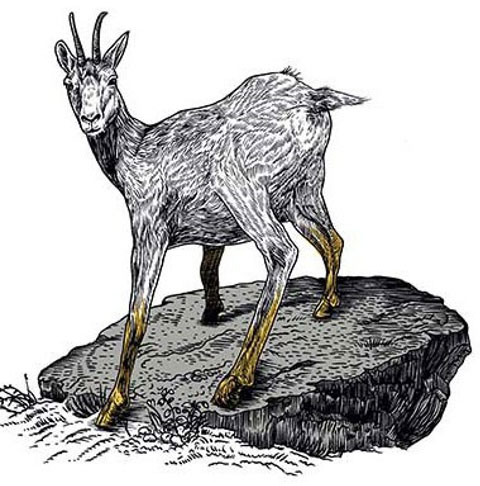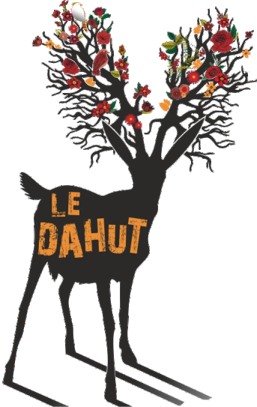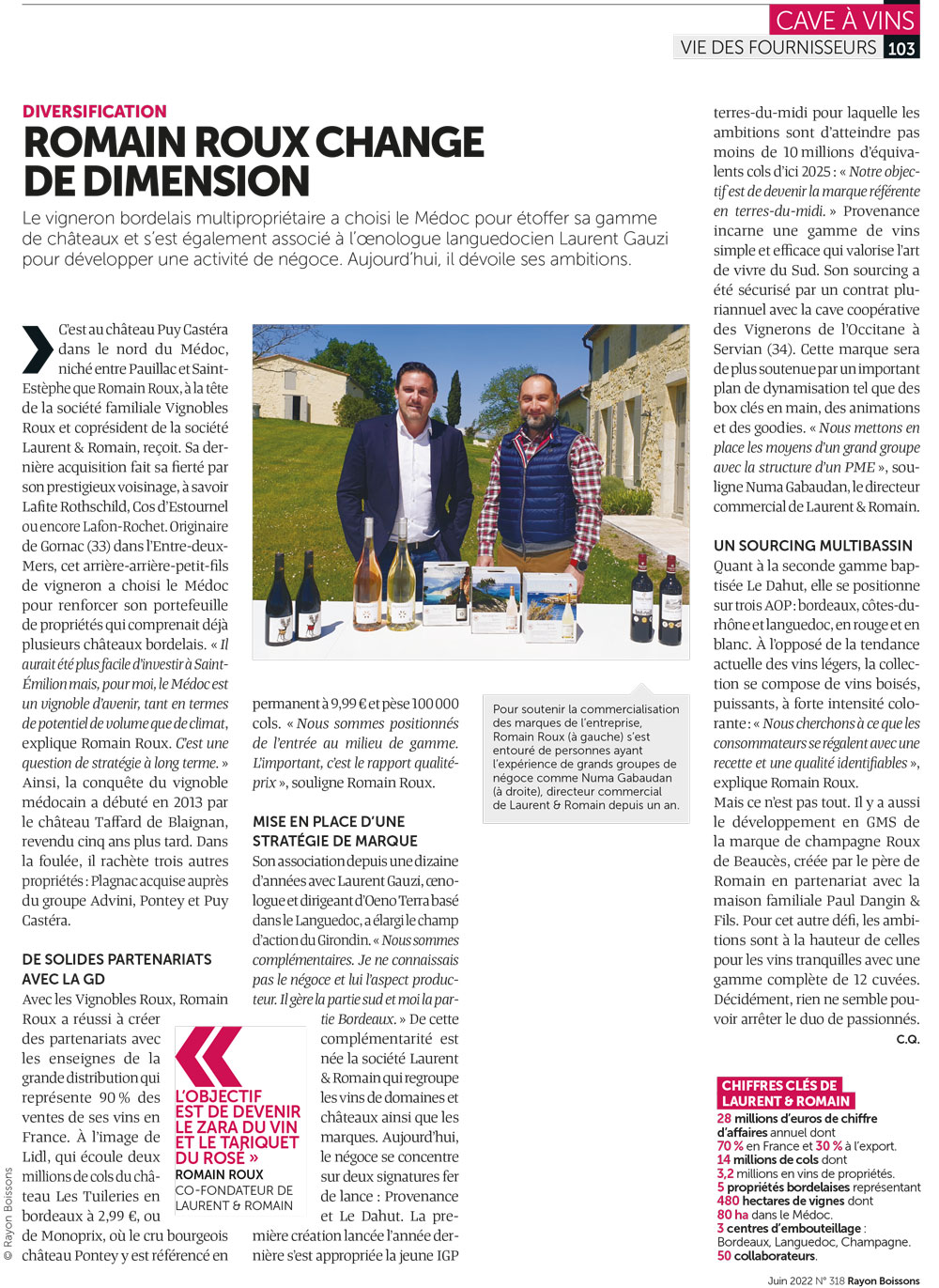The legend
The dahu (sometimes spelled dahut) is an imaginary wild animal living in mountainous areas, an environment that has influenced its physical evolution over generations. Its characteristic aspect lies in the fact that it has two side legs shorter than the other two, in order to stand well in the mountainous slopes. The dahu is also known by different names depending on the region and sometimes takes on the appearance of a bird. The existence of the dahu is generally mentioned in rural areas and as a joke to particularly naive people and city dwellers unfamiliar, for example, with mountain fauna (as in the Pyrenees or the Alps), or simply forest fauna, as in Burgundy. In fact, almost everywhere in France, Switzerland and the Aosta Valley, variable accounts, of oral tradition, provide a description of what relates to this animal and to the “initiation” ritual of its hunt, as transmitted in some communities. This animal would have as main characteristic the fact that two of its four legs would be shorter than the others: the difference would be observed not between the front legs and the hind legs (as in the kangaroo, the squirrel or the hare), but between those on the left and those on the right.
The explanation for this difference in length would be that the animal would only live on slopes.

Its special morphology, the result of evolution, would facilitate its movements on the side of a hill or a mountain, but would however force it to always move in the same direction and on the same side, without being able to turn around. The imaginary description sometimes offers “logical” details about the two supposed subspecies of the animal:
- the dahu with shorter left legs would be found on the right side, while the dahu with shorter legs on the right side would frequent and graze on the left side;
- the two species only hybridize very rarely in nature (which is “understandable” without difficulty when one visualizes their opposite course: being able to find themselves only head to head or ass to ass, any attempt at reproduction would be impossible or at least very perilous).
In another equally fanciful version, the two subspecies are named dextrorotatory and levorotatory after the obligatory meaning of their peregrinations around the mountain; there are developments on the strategies of the animal when it comes face to face with a representative of the other subspecies or when a male seeks to join a female. On the other hand, in a volcanic region, the dextrorotatory dahu arriving at the top of the crater by turning to the right will become levorotatory by penetrating into the crater cautiously, anisometry of the legs obliging.
The Dahut originates from the famous imaginary animal that can be seen in some remote areas that are still natural and wild. Like hikers or hunters taking part in the famous Dahut hunt, is this wine solely the fruit of our imagination? Be reassured, this wine does exist and the similarities with Dahut hunting are obvious and numerous. Dahut hunting is practiced on a beaten path, in a thick and dark forest if possible, and even at night. This description of the forest is so mistaken similar to the wine of DAHUT. He is strong, powerful with a dark robe that reminds us of dark full moon nights. All our senses are then awake to capture the slightest taste, the slightest shape or color that will transport us during a new taste journey made of unreal and surreal encounters). With a score of 4.1/5 on the “VIVINO” site for the red and 3.8 for the white, these wines are recommended for all enthusiasts who wish to travel and discover a region, an origin, a history. Le DAHUT, an original “Laurent & Romain” signature










